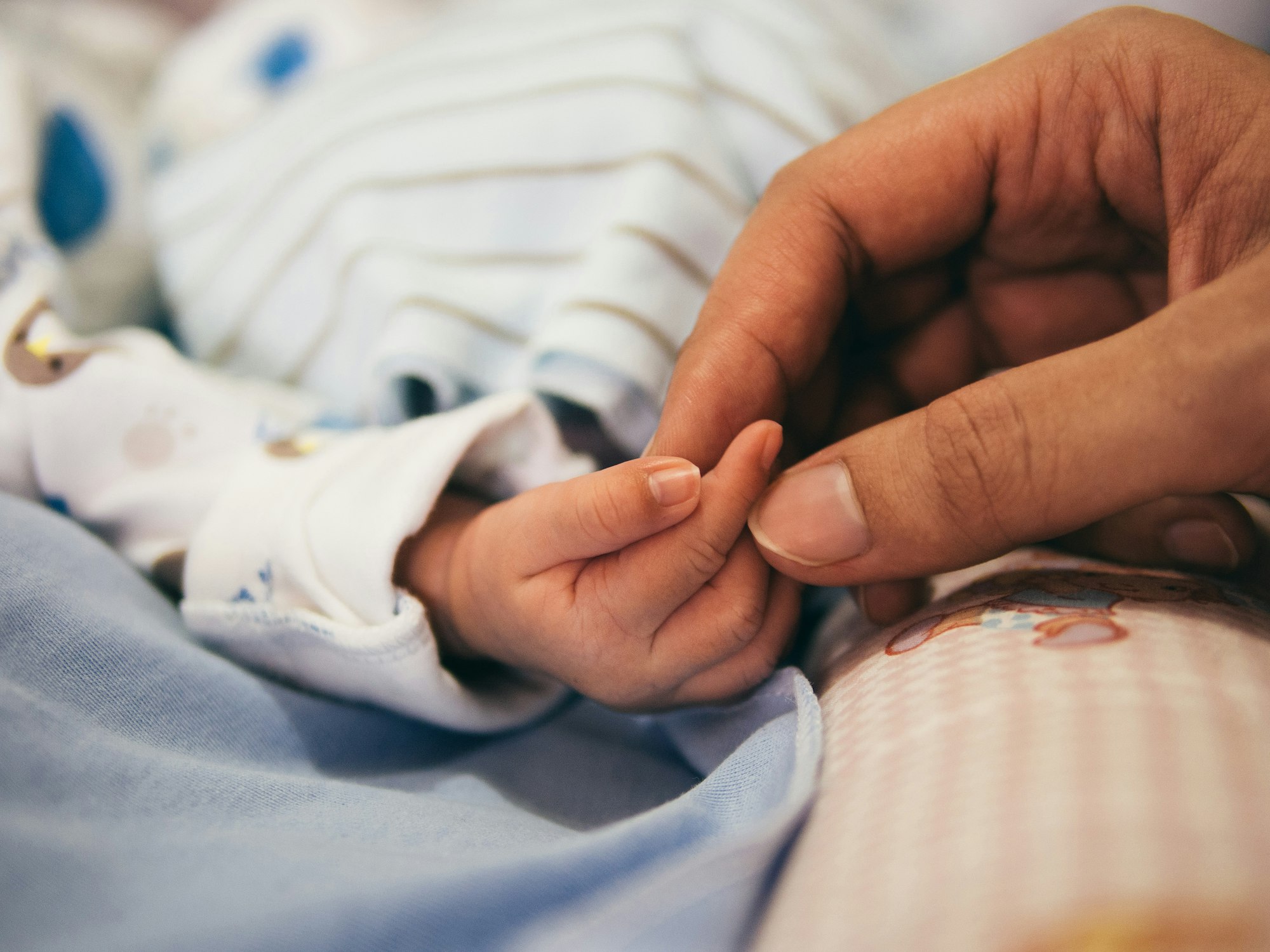This is a part of an awareness-driving initiative to help families who may be living with Farber disease. If you believe you or your loved one have the symptoms of Farber or have been diagnosed with Farber, please get in contact with our team at patientinfo@aceragen.com.
As Gerardo recalls the early days of being with Santi, he comes back to the normality of it all. “Everything was fine,” he says. “Everything was perfect.”
Santi was born September 4th, 2014 and looked like most any child would - small, innocent, healthy. Like in so many stories about health, it's only in the unapologetic clarity of hindsight that make the signs obvious.
But who in the moment would have guessed as to what these signs signaled? In those early sleep-deprived and joyous days of caring for a brand-new child, how many people would jump to the conclusion that something is amiss? Santi’s laugh sounded a tad hoarse, yes, but it didn’t stop him from laughing. Or crawling. Or going to swimming lessons. What mind would make that leap from a slightly hoarse voice to a serious illness? This is how misdiagnosis feels in the beginning for everyone, when the symptoms aren’t quite so severe and everything seems so explicable. Things were fine. Things were perfect.
So of course, at six months, Gerardo took Santi for his first swimming lessons. Young, yes, but under the watchful gaze of his father, Santi splashed in the water, laughing his slightly hoarse laugh.
So went life as a new family, those regular days of swimming and feeding and laughing and proud parents fawning over their perfect newborn. But at ten months, Santi suddenly seemed different in the pool. He became afraid whenever someone other than Gerardo would watch him in the pool. It’s that perfect lens that time provides that reveals that this was another warning sign. In the moment who could have guessed that this sudden fear was anything deeper than an infant simply looking for his father? The story of Santi’s diagnosis is gradual and then sudden.
Around Santi’s first birthday, Gerardo noticed a lump in his son’s finger. It didn’t seem to cause him any pain. “We thought it was an insect bite,” says Gerardo. “We didn’t give it much importance.” Their pediatrician confirmed that it seemed to be nothing to fret over. At the time, Santi seemed about ready to walk, and enjoyed moving around while using his toddler walker. A few months after, Santi stopped using his hands to crawl. Suddenly, seemed unable to support his own weight and grew very afraid to fall. Eventually, he stopped trying to walk altogether. He developed lumps in his toes, ankles, ears. It was February 2015.

The start
“It was the start of our journey.”
“With every visit and consult, in the deepest part of our hearts, we expected that one doctor would know the problem with my son,” Gerardo recalls. “And that he would say that it was not a serious problem.”Gerardo and his wife spent days and nights researching possible causes for Santi’s pain. But each article that discussed the presence of nodules - the insect bite-like bumps that had appeared on Santi - seemed to link back to juvenile idiopathic arthritis. While Santi seemed weak and afraid of the pain of falling down, it did not seem like he had any sort of arthritis. And all the while, doctor after doctor, specialist after specialist, seemed to concur on only one point: They had never seen anything like what was happening to Santi.
Eventually, their search led to the National Organization for Rare Disorders (NORD). While reading through every piece of material on their website, Gerardo came across a description of the ultra-rare Farber disease. Looking back on the moment, he says, “My heart was paralyzed. ”At the time, there were only about 80 cases of the diseases ever reported. The only treatment was a bone marrow transplant procedure that had only been described in a few of the historical patients. Worst of all, most children who developed Farber disease did not pass four years of life. Given the ultra-rare nature of the disease, it came as little surprise that there were no new treatments being developed to fight it.
“No one is prepared for that sort of information about your kid,” says Gerardo. “This was very sad for us. Everything was perfect but the most important person in our life now had a devastating condition…it was definitely terrible, that moment.”
"My heart was paralyzed."
The long way
“The road we needed to walk was a long, long way.”
A biopsy of a nodule further confirmed that Santi exhibited signs of Farber disease. But even the clarity that comes from a correct diagnosis - even after so many false starts and frustrated nights of dead-end research - offered only a little bit of peace.
The journey didn’t stop at diagnosis, after all. There was still much left to do. Some specialists recommended pursuing a treatment to treat the enzyme Santi was missing. After finding a doctor in Germany who knew about the disease, Gerardo was told that he needed to wait while a new company invested in the long expensive undertaking of developing a therapy based on the work of researchers in New York. And so he and his wife were forced to make the difficult decision to wait for a clinical trial for enzyme replacement therapy, knowing that it may be years before the treatment is made available for their son.
Because they will not elect to do a bone marrow transplant for him until his condition gets substantially worse, Gerardo and his family are locked into a holding pattern, managing the symptoms of Farber disease as best they can and helping their son in any way possible.“We’ve been living with this diagnosis for three years now, and these three years have been very stressful for us,” Gerardo admits. Santi now goes to a school where the staff and children are aware of his condition and makes accommodations for him, and where his intelligence is made obvious by the schoolwork. But his life is restricted by the pain caused by Farber disease. He is unable to partake in intense physical activities. He cannot extend his arms, nor can he walk more than a block. While these frustrating days continue on, Gerardo and his wife find solace in a makeshift community that they have built.
They are in regular contact with a German family who have four children, two of whom have been diagnosed Farber disease. In fact, Gerardo’s wife made a visit to them recently to see what she could learn about how another family lives in the shadow of this condition. Additionally, Gerardo spends some of his time raising awareness of the disease, working to tell Santi’s story and using photos and videos of his son to give people a better of understanding of what this condition looks like and how it impacts the life of a family.
“It would be helpful to show other people,” he says. His hope is that by sharing Santi’s story, other parents who feel that a diagnosis given to their child may not be completely correct can find the resources they need to advocate for second, third, fourth opinions. If they can do that, perhaps more cases of Farber disease would be properly categorized, written about, and researched. And perhaps that research can, one day, bring about the treatment that will make the long, frustrating journey for a father and mother and child a distant memory.



